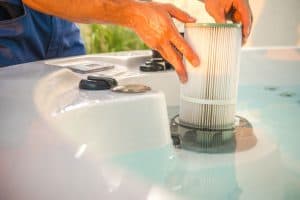Cold water therapy has exploded in popularity, and at the centre of it is the mighty ice bath. Once reserved for elite athletes, ice baths are now a mainstream wellness tool across the UK, used to promote recovery, mental resilience, and overall wellbeing.
So, what exactly makes them so powerful? Let’s dive into the science and benefits.
What Is an Ice Bath?
It involves immersing your body in cold water (typically 10°C or lower) for a short period, usually 5 to 15 minutes. Some use it for muscle recovery after exercise; others for boosting mental toughness or even as part of a daily morning routine.
Modern units are compact, easy to set up in gardens or patios, and ideal for home use.
Top Benefits
1. Speeds Up Muscle Recovery
- Reduces inflammation and soreness post-exercise
- Flushes out lactic acid and improves circulation
- Widely used by athletes and personal trainers
2. Boosts Mental Resilience
- Cold exposure triggers a stress response that helps build tolerance
- Supports discipline and mental focus
- Many users report improved mood and reduced anxiety
3. Improves Sleep Quality
- Regulates cortisol levels
- Helps reset the nervous system before bed
- Can support deeper, more restorative sleep
4. Increases Circulation
- Cold water constricts blood vessels, then dilates them upon warming up
- Improves vascular health and oxygen delivery
5. Supports Immune Function
- Cold exposure has been linked to stronger immune responses
- May reduce illness frequency when practised regularly
Who Uses Ice Baths?
You don’t need to be a professional athlete to benefit. Today’s users include:
- Fitness enthusiasts and runners
- Busy professionals seeking mental clarity
- Biohackers and wellness advocates
- Cold water therapy beginners looking to boost health naturally
How to Use an Ice Bath Safely at Home
- Start Slow – Begin with 10–12°C water for 2-3 minutes
- Control Your Breathing – Slow, deep breaths help regulate your nervous system
- Build Up Gradually – Increase duration and reduce temperature over time
- Warm Up Afterwards – Always warm up gradually with layers or light movement
Important: Avoid them if you have cardiovascular conditions or are pregnant. Always consult your doctor first.
Choosing the Right Setup
When looking for an ice bath in the UK, consider:
- Size & portability
- Insulation & cooling method (manual or electric)
- Ease of drainage and cleaning
Explore our range of durable, easy-to-install solutions on our page.
Ice Bath vs Cold Shower: What’s the Difference?
While both offer cold therapy benefits:
- Ice baths offer full-body immersion and stronger physiological effects
- Cold showers are great for beginners but less intense
For full benefits, especially post-exercise, ice baths are superior.
From improved recovery and energy to better mental clarity, the ice bath is quickly becoming a wellness essential in UK homes. It’s accessible, effective, and backed by science. Whether you’re seeking better performance or just a cold kick-start to your day, ice baths deliver.
Ready to experience the chill? Explore high-quality options and expert advice at Total Hot Tubs.
Contact Us
Phone: 0800 999 8707
Email: info@totalhottubs.co.uk
FAQs
Q1: How long should I stay in one?
A1: Beginners should aim for 2–5 minutes, gradually increasing over time as tolerance improves. For experienced users, 10–15 minutes is the recommended maximum. Always monitor how your body responds and exit immediately if you feel any numbness, dizziness, or excessive discomfort.
Q2: How often can I take one?
A2: 2–3 times per week is typical for most users, especially after intense exercise or training. However, some athletes and wellness enthusiasts use ice baths daily.
Q3: Is one better than a cold shower?
A3: Yes. While cold showers offer some benefits, ice baths provide deeper, more consistent cold exposure through full-body immersion. This leads to enhanced muscle recovery, improved circulation, and stronger mental resilience over time.





